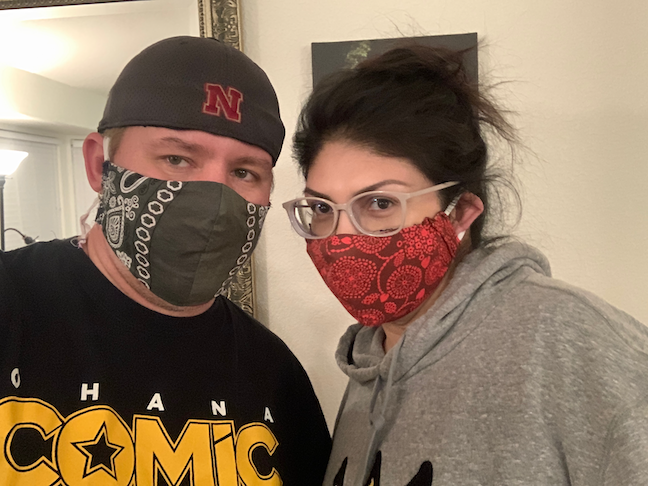
Superintendents are now diving into the nitty-gritty as they look ahead to reopening schools safely in fall 2020 and welcoming students back into classrooms that may look a lot different.
There is a “pretty huge list of things” that district leaders will need to figure out before full or hybrid in-person learning resumes, says Lori Villanueva, superintendent of Coalinga-Huron USD in Central California’s vast agricultural region.
Leaders across the country have proposed having half their students attend each day, splitting into morning and afternoon sessions or inviting only students who need the most support into buildings in the fall.
“Even if we have half our kids at a time, we have to go measure classrooms to see how many kids we can put six feet apart,” says Villanueva, who is a member of the District Administration Leadership Institute.
More from DA: Online? In-person? How fall 2020 is taking shape for schools.
“We can brainstorm a lot of different ideas but we also have to figure out how they are going to work in reality,” Villanueva says.
Villanueva listed several questions leaders will need to answer with careful planning so students can return as safely as possible:
Masks for students and teachers
Educators cannot assume that all families will have access to masks if students are required to wear them in the fall.

And even if students are wearing masks, how can teachers make sure the masks are clean or that fidgety younger children or independent-minded teenagers will keep them on?
The classroom environment will certainly be changed if teachers and students have most of their faces covered.
“You’ll miss a lot of body language if you look out into the classroom and all you see are eyes looking back at you out of masks,” she says. “We’ll have to change some teaching practices.”
Monitoring the health of students and staff
How will districts screen students and staff for illness each day? Villanueva says her district is planning to buy thermometers and may even consider a camera that can monitor the body heat of people entering school buildings.
More from DA: Why some schools are ending the year early
And what will be the procedure when a student or adult falls ill in school? Will building close again?
If students return, leaders also will have to figure out how to protect staff who have medical conditions that make them more susceptible to severe COVID-19 illness.
Can teachers with asthma, for instance, return to classrooms in the fall?
Social-distancing in transportation
Coalinga-Huron USD buses in about half of its 4,600 students, including a large number from outlying ranches and migrant compounds where parents work in the agriculture industry.

The district covers about 1,200 square miles, with some students riding the buses for more than an hour to get to school.
The rural area does not have any of the alternative transportation options that are available in urban and suburban districts.
“How do we transport kids if I don’t have enough bus drivers to make sure we’ve only got kids in every other seat,” she says. “Transportation is going to be a problem.”
Cleaning schools
Custodial staff would likely have to clean classrooms more rigorously every night, which would increase costs for staff and cleaning supplies—if the latter are even available in the necessary quantity.
Before the coronavirus outbreak, district custodial staff cleaned room about every other night.
And what about toilet paper?
“We’re not going to open schools if we can’t get basic products for disinfecting, cleaning and making classrooms safe,” she says.
Equity in instruction
Lack of access to technology has made distance and online learning more challenging for many students.
More from DA: How schools may change forever when they reopen in fall 2020
She knows some parents don’t have the technical or language skills to help students with their classwork.
Like most district leaders, Villanueva expects budget cuts and wonders if she will have the funding to buy mobile WiFi hotspots or to pay internet bills for families.
“I’m concerned we’re going to have a whole set of kids passing through who aren’t getting the whole educational experience at a quality level,” she says. “We want to be held accountable for providing great instruction but how do you make that happen when you’re not in control of whole situations.”
P.E. and fitness
Will students be allowed to play team sports? How about low-contact sports such as tennis, swimming or golf?
And how will educators maintain social distancing of students during less formal recess periods?
“High school students could do a better job of monitoring themselves,” Villanueva says. “But keeping little kids six feet apart is going to be incredibly difficult.”
Accountability and social-emotional learning
Finally, she hopes state lawmakers will ease accountability standards for the foreseeable future as educators focus on the social-emotional needs of their communities.
Her teachers have been sending postcards and care packages to students and calling families each week.
Teachers also cleaned out their classrooms, giving out paper, crayons, glue, books and other supplies to students.
“Our food distribution program is the single most important piece of our operations right now,” Villanueva says. “When we pull up in the big yellow bus, the kids are so excited to see the presence of the school in their neighborhoods.”
Share your stories of teacher creativity
District Administration is sharing stories of creative teaching during this challenging time. Please use this form to nominate an innovative teaching effort for us to share with our readers.







